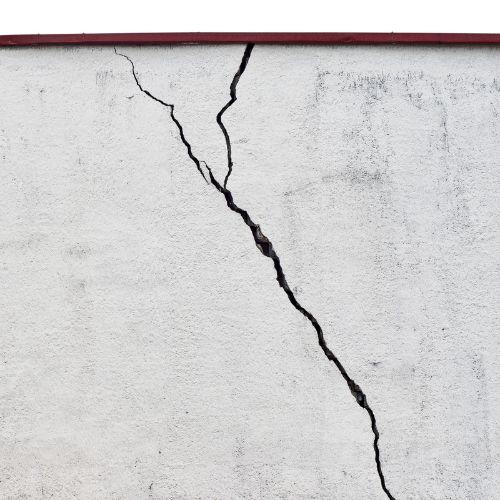Take a closer look at the concrete exterior of your building. Do you see any cracks? You may be wondering if it’s just wearing down or if the issue runs deeper. You may be seeing signs of concrete cancer.
As durable as concrete structures are, the material relies on waterproofing. Water corrodes concrete. When moisture seeps into the concrete surface, it compromises the structural integrity of your building and causes concrete cancer.
This issue is best fixed sooner than later. Left untreated, things will get much worse (and fast).
If you’re worried that your building has concrete cancer, rest assured that there are ways to fix it. We’re going to cover the signs of concrete cancer, what causes it, and how to repair it:
What Is Concrete Cancer?
Concrete cancer is caused by moisture. It starts when air or water seeps inside of the material. Given that concrete is a naturally porous material, it quickly absorbs any water or air that penetrates the surface.
When concrete is used in construction, it’s reinforced by steel beams and iron bars. If those materials are exposed to water or air, it creates carbonic acid that corrodes the metal.
As the metal corrodes, it expands and causes concrete spalling (or cracks). The more cracks that develop, the faster the material corrodes. Concrete will expand outwards and accelerate the rate of corrosion. This chain reaction of events exemplifies why it’s so essential to treat concrete cancer early.
As the name suggests, concrete cancer causes severe problems for your building. Whether it’s developed in the roof or foundation of your property, it’s imperative to seek treatment ASAP.
Signs & Risk Factors of Concrete Cancer
The main cause of concrete cancer is poor waterproofing. Other risk factors include low concrete cover, extreme weather conditions, and poor-quality concrete.
As concrete ages, it becomes more susceptible to cracks and leaks. Flat concrete roofs often develop concrete cancer over time. Since these roofs are not angled, it’s easy for water to pool up on the surface and lead to corrosion.
We’re going to cover the main warning signs of this structural defect:
- Concrete bubbling
- Rust stains emerging
- Cracked concrete
- Crumbling concrete
- Water leaks or stains
Concerned that there may be concrete cancer in your building? Leave it to the professionals to diagnose concrete cancer accurately.
Damaged concrete does not necessarily indicate concrete cancer, but it is a sign that you should have a professional come to inspect it. Once they’ve had a closer look, they can use diagnostic analysis to determine whether you’re dealing with concrete cancer.
How To Prevent Concrete Cancer
After you’ve footed the repair bill for your concrete repair, you’re probably wondering how to prevent it from happening again.
As we mentioned, concrete cancer is caused by water damage. If you’re looking for preventative steps to take, get a professional to inspect how waterproof your concrete structure actually is.
Be sure to practice regular maintenance of your concrete structure. Apply protective coatings as needed to reinforce its waterproofing capabilities. Whenever you notice cracks or other structural defects, call a contractor; they can repair the minor issue before it leads to a larger problem.
With routine maintenance and proactive care, you can prevent concrete cancer from developing and keep your building in top shape.
Treating Concrete Cancer
You might be wondering how to fix concrete cancer in buildings without going broke. Specialist repair work may not come cheap, but it’s paramount for the integrity of your building structure.
Depending on the extent and cause of the damage, the right repair method will vary. A professional contractor can assess your building to determine the best course of action.
We’re going to cover the most common treatment options:
Replacement
If you’ve caught concrete cancer early enough, you might be able to use a simple replacement method. Contractors can add new concrete around the reinforcing bars. The surrounding concrete will protect the steel beams from water and air.
This repair may not be feasible for all buildings; you can’t necessarily replace the whole concrete surface of a building. It’s best suited for minor repairs.
Polymer-modified repair system
Is the concrete cancer being caused by an insufficient concrete cover and concrete carbonation? In that case, a polymer-modified repair system may be recommended.
First, the damaged concrete is removed from the reinforcing beams. Any rust is removed from the steel or iron material. Next, the contractor will apply a combination of primer, protective coatings, and polymer-modified material. They may install additional reinforcing steel anodes if necessary. The steel primer and anti-carbonation protective coating will increase the resilience of the structure.
Electrochemical treatment
Is your building near the ocean? If so, the salty air may be causing the problem. It causes chloride contamination. Electrochemical treatment is used to prevent corrosion. With this repair work, an easily-corroded metal is placed near the steel/iron to act as an anode.
You might be wondering if you can perform these concrete repairs yourself. In our opinion, you’re better off working with a professional. Otherwise, you may not repair the problem completely. By the time it spreads, the repair costs will be more expensive than they would have been initially.
The structural soundness of your building is not something to take lightly. Not only will it affect the resale value of your property, but it may impact the safety of the occupants. Leave concrete repair to the professionals.
Looking for a Concrete Contractor?
Water-driven concrete cancer threatens the structural integrity of your building, from the internal walls to the foundation itself. Don’t worry: Our contractors can help you fix it.
Maintain the structural integrity of your building with our repair services. At DUB-L-EE, our commercial contractors in Albuquerque offer concrete cancer repair. When you need concrete cancer treatment, give us a call!

Eddie has been a resident of Albuquerque his entire life.
After he graduated from high school, Eddie joined the Plumbers & Pipefitters Union where he obtained his Journeyman Plumber and Journeyman Gas Certifications. He then worked in the commercial plumbing industry for 7 years until he and his father decided to go into business together and started Dub-L-EE, LLC.
In the last 7 years Eddie has obtained his GA02, GA03, and MM98 certifications allowing Dub-L-EE to fully utilize Eddie Sr. and Eddie Jr.’s expertise in the construction industry.

